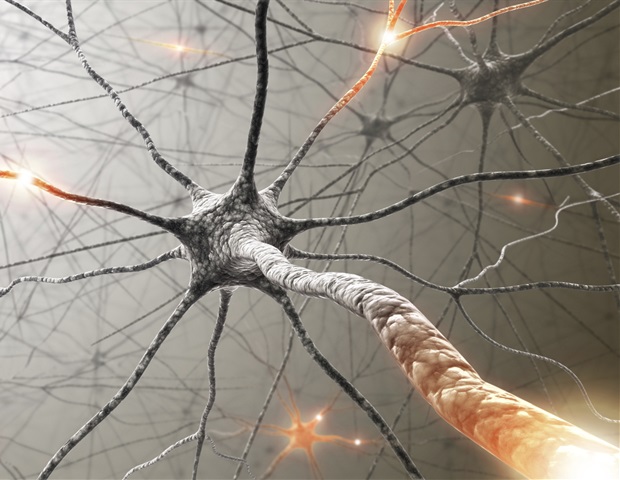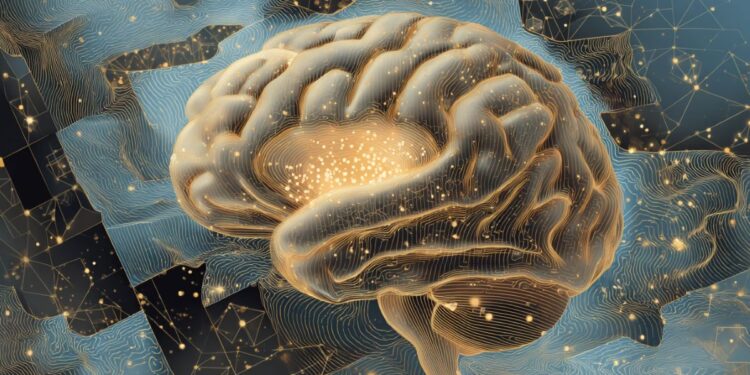Summary: Scientists have discovered a group of brain cells in the orbitofrontal cortex that become more active when outcomes are uncertain, revealing how the brain adapts and learns from unpredictable situations. These neurons, found in both rats and humans, help balance flexibility and precision in decision-making, especially when rewards are inconsistent.
When these cells were disabled in rats, learning performance decreased, suggesting that they play a key role in monitoring and adapting to changing conditions. The findings may pave the way for therapies targeting rigid thought patterns seen in anxiety, post-traumatic stress disorder and addiction.
Key facts:
Uncertainty neurons: Specialized brain cells in the orbitofrontal cortex fire more during uncertain decisions. Adaptive function: These neurons support flexible learning, allowing the brain to adapt to changing patterns and probabilities. Clinical potential: Understanding how they work could help develop treatments for conditions related to cognitive rigidity, such as anxiety and addiction.
Source: UCLA
The newly identified brain cells evolved according to the theme: “Life is uncertain; eat dessert first.” The neurons, located in the front part of the brain, are more active when the outcome of a decision is uncertain, suggesting that they aid in decision-making, along with learning and general mental flexibility.
The UCLA discovery in rats could help develop new treatments that involve targeting rigid thought patterns, such as those for anxiety and substance use disorders in humans, who also have the same type of brain cells.
“If we have full knowledge of things that will happen, then we don’t really need to learn and we don’t need to adapt our behavior,” said Alicia Izquierdo, a professor of behavioral neuroscience in the UCLA psychology department and lead author of a paper published in the journal Nature Communications.
“But that’s rarely the case. We found these cells in the orbital region of the frontal cortex that are primed for uncertainty and we think they’re essential for learning.”
The orbitofrontal cortex is located in a part of the brain directly above the eyes in both humans and rats, and is active when we experience emotions, tastes, smells, and the positive rewards of our decisions.
Neuroscientists have determined that the orbitofrontal cortex is also involved in flexible reward learning.
Reward learning occurs when we receive a reward for making the “right” decision, but do not receive a reward for making the “wrong” decision. Reward learning is said to be flexible when we do not know which of our choices will lead to the reward until we learn a pattern or set of conditions that lead to the rewarded option.
Reward learning is a process in which the desire for a positive reward motivates the learner to persevere through the disappointment or negative outcomes of the incorrect choice until the correct pattern is learned.
Because the orbitofrontal cortex has several types of neurons, UCLA doctoral student and first author of the paper Juan Luis Romero-Sosa and his colleagues devised a way to look at primarily “pyramidal cells” that were active when rats performed flexible reward-learning activities, such as tapping the correct dots on a touch screen to receive a food reward. They infused the brains with a calcium ion tracer widely used in brain imaging studies because it lights up during activity, and a modified virus that expresses synthetic receptors that could “shut down” neurons depending on whether the rats were given a drug that binds to those synthetic receptors in the brain to stop the activity.
A small light and camera were placed on the skull to record neural activity while the rats performed these learning tasks. At first, the rats received a reward for any task completed.
For several days, the touch screen tasks became more difficult and with increasingly uncertain results. In the most difficult part of this task, there was only a 70% chance of getting a reward, and the other option had only a 30% chance of getting a reward.
The researchers quickly identified cells that lit up when the animals made decisions.
“The rat has to constantly adapt to a changing environment. All of this means that the rat is learning to choose one of two options and which option is correct keeps changing,” Romero-Sosa said.
“So once the rat discovers the correct option, it will start selecting it over and over again. And then, after a certain number of trials, the task changes to keep the rat constantly occupied rather than simply finding a strategy and exploiting it over and over again. We found subpopulations of neurons in this specific region of the frontal cortex that seem to become more interested in the task as it becomes more and more uncertain.”
The researchers studied learning for each level of uncertainty on alternate days and found that during days when the orbitofrontal cortex was inactivated across the board, there was a reduction in performance. The animals were unable to track the value of the high-probability choice over time, meaning they did not learn well under increasing uncertainty.
“The rats didn’t make better decisions as often,” Romero-Sosa said. “We also found that there was a decrease in adaptive behavioral strategies. This generally means that if I make a choice and I get a reward, I will make that choice again. There was less of that when we inactivated the orbitofrontal cortex, suggesting that inactivation interferes with a good strategy.”
“The rats become adept at this as the experiment goes on, but there is this push and pull, or this balance between being adaptable and being precise,” Izquierdo said.
“If you want to be flexible, you can’t be too precise, and vice versa. These experiments show us that there is a dynamic between gaining experience and at the same time adapting to uncertainty. The other area of the brain we imaged, in the secondary motor cortex (or M2), by contrast, those cells showed preferential activity toward certainty, not uncertainty.”
The ancestors of rats and humans evolved in environments where the need to gain experience had to be balanced with adaptation to uncertainty, and researchers suspect that many animals also possess neurons primed for conditions of uncertainty.
If their findings are eventually confirmed in humans, the researchers believe they could open new avenues in treatment targeting those cells that have been completely damaged or simply less functional in people struggling to adapt to uncertainty. This could include conditions such as anxiety disorders, post-traumatic stress disorder, and dementias.
The research was funded by two grants from the National Institutes of Health: one to fund the research and another specifically for predoctoral scholars like Romero-Sosa.
“The equipment was partially purchased with this grant, and all reagents, viruses, animals, animal housing, and the ability to disseminate the findings were funded by the NIH,” Izquierdo said.
Key questions answered:
A: They identified neurons in the brain’s orbitofrontal cortex that are more active when outcomes are uncertain, helping to guide learning and flexible behavior.
A: They help people adapt to changing environments by learning which options lead to the best outcomes, even when the outcomes are unpredictable.
A: Conditions such as anxiety and post-traumatic stress disorder involve difficulty adapting to uncertainty; Targeting these neurons could improve cognitive flexibility and resilience.
About this research news in neuroscience and learning
Author: Holly Ober
Source: UCLA
Contact: Holly Ober – UCLA
Image: Image is credited to Neuroscience News.
Original research: Open access.
“Neural coding of choice and outcome is modulated by uncertainty in the orbitofrontal but not the secondary motor cortex” by Alicia Izquierdo et al. Nature Communications
Abstract
Neural encoding of choice and outcome are modulated by uncertainty in the orbitofrontal but not the secondary motor cortex.
The orbitofrontal cortex (OFC) and secondary motor cortex (M2) are implicated in flexible reward learning, but the conditions that differentially recruit these regions are not fully understood.
We imaged the calcium activity of single neurons in rat OFC or M2 during de novo learning of increasingly uncertain reward probability schedules.
Choice predictions were decoded from M2 neurons with high accuracy under all certainty conditions, but were decoded with higher accuracy from OFC neurons under higher uncertainty conditions.
Choice and outcome decoding accuracy was predicted by Win-Stay and Lose-Shift behavioral strategies in OFC, but not in M2.
While chemogenetic inhibition of OFC neurons attenuated learning on all schedules, M2 neurons were found to support learning only on the safest reward schedule.
Therefore, OFC neurons preferentially encode choices and outcomes that encourage greater reliance on adaptive strategies under conditions of uncertainty.
This reveals functional heterogeneity within the frontal cortex in support of flexible learning.




















